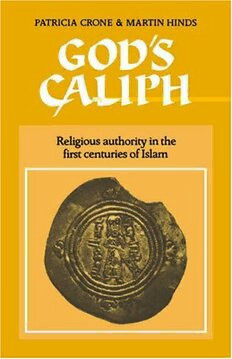
God’s Caliph: Religious Authority in the First Centuries of Islam PDF
162 Pages·2003·6.454 MB·English
Most books are stored in the elastic cloud where traffic is expensive. For this reason, we have a limit on daily download.
Preview God’s Caliph: Religious Authority in the First Centuries of Islam
Description:
This study examines how religious authority was distributed in early Islam. It argues the case that, as in Shi'ism, it was concentrated in the head of state, rather than dispersed among learned laymen as in Sunnism. Originally the caliph was both head of state and ultimate source of religious law; the Sunni pattern represents the outcome of a conflict between the caliph and early scholars who, as spokesmen of the community, assumed religious leadership for themselves. Many Islamicists have assumed the Shi'ite concept of the imamate to be a deviant development. In contrast, this book argues that it is an archaism preserving the concept of religious authority with which all Muslims began.
See more
The list of books you might like
Most books are stored in the elastic cloud where traffic is expensive. For this reason, we have a limit on daily download.
